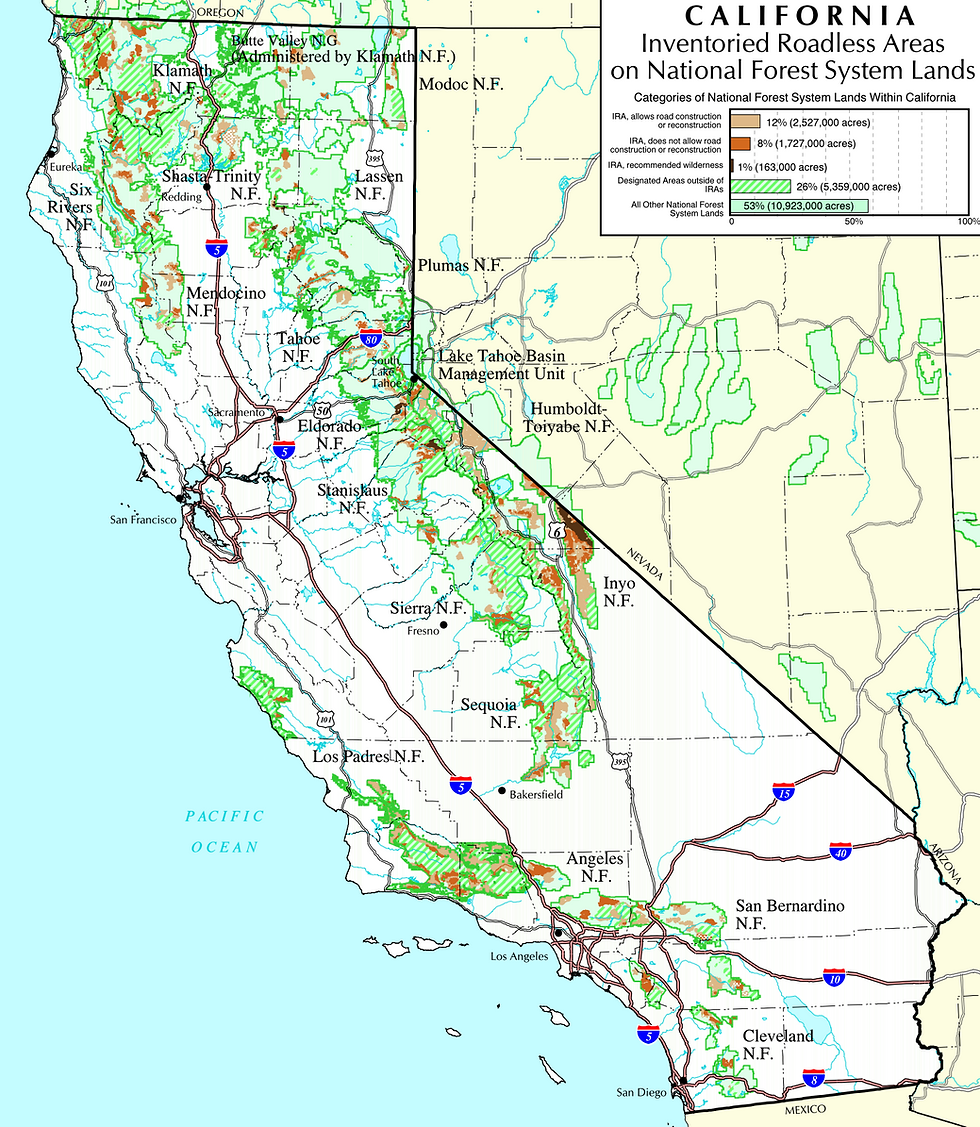EPIC Files Rulemaking Petition to Delete Harmful Rules that Allow Take of Northern Spotted Owls
- Feb 11, 2013
- 3 min read
On February 6, 2013, EPIC submitted a
rulemaking petition to the California Board of Forestry aimed at enhancing protection measures for California’s Northern Spotted Owls, while saving substantial state and federal agency resources. The rulemaking petition is the product of over three years of EPIC spotted owl advocacy aimed at challenging the glaring inconsistencies between the inadequate protection measures found in California’s Forest Practice Rules and the clear guidelines provided by the United States Fish and Wildlife Service, backed up by even clearer legal precedent from the Supreme Court.
In California, Northern Spotted Owl protective regulations were originally adopted by the Board of Forestry in the early 1990’s shortly after the species was listed as “threatened” under the federal Endangered Species Act. These regulations were based on the limited scientific information available at the time of the rulemaking.
The protective measures for Northern Spotted Owls in the California Forest Practice Rules were designed to allow continued timber harvest within suitable habitat while avoiding “take” as prohibited under the federal ESA. Prior to 1999, these regulations were enforced via consultation with the California Department of Fish and Game. In 1999, the California Department of Forestry and Fire Protection (CALFIRE) requested that the United States Fish and Wildlife Service (Service) begin consulting on Timber Harvest Plans (THPs) that proposed removal of suitable Northern Spotted Owl habitat in order to insure that “take” was avoided.
Over time and with the benefit of both office and field experience, the Service began the question the effectiveness existing Forest Practice Rules to avoid “take” of Northern Spotted Owls. Despite participation in the consultation process (known as technical assistance), the Service began to note the loss of historic spotted owl territories as a direct result of timber harvest conducted under the Forest Practice Rules protective provisions.
In 2008, the Service dropped out of the Technical Assistance process, citing financial issues. In 2009, the Service provided CAL FIRE with a guidance document that provided both a regulatory and scientific basis for protective measures it believed would more effectively avoid “take” of Northern Spotted Owls. The Service provided a wide range of evidence that California’s Forest Practice Rules were not effective at maintaining owls on the landscape. The Service noted that habitat definitions and habitat retention provisions in the California Rules did not adequately represent high quality habitats, and did not prevent the depletion of high quality habitats as a result of timber harvest.
The Service demonstrated how California’s existing regulations intended to protect Northern Spotted Owls on private lands have actually worked to damage the species. Our work over the last three years has verified the inadequacy of the Rules to prevent “take” of Northern Spotted Owls as a direct result of timber harvest activities reviewed and approved by CAL FIRE. We have uncovered numerous examples of how large timber companies have taken advantage of the antiquated and ineffective Rules to essentially force owls off their property and out of their traditional homes.
EPIC’s petition is designed to remove these antiquated and ineffective rules from the books. Landowners will still have the option of following the guidance provided by the Service to protect owls during timber harvest activities. Adoption of this rulemaking by the Board would be an easy fix that would bring the California Rules more in line with federally-recommended standards for protecting Northern Spotted Owls. The rulemaking petition is will also help to streamline agency and public review of THPs proposing to harvest owl habitat.
The rulemaking petition is also submitted against the backdrop of EPIC’s petition to list the Northern Spotted Owl under the California Endangered Species Act. Recently, the California Department of Fish and Wildlife completed an evaluation of EPIC’s petition and recommended that a full status review be conducted to determine wether the owl be listed under the California ESA. With the potential for spotted owls to receive protections as a candidate species under the California Act in the near future, the Board of Forestry could take a proactive step toward improving spotted owl protections by adopting EPIC’s rulemaking petition.
Strange things can happen at the Board of Forestry, however. With large industrial timber giants including Sierra Pacific Industries holding influential seats, the deletion of these harmful and wasteful rules is no slam dunk.





Comments